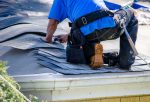South Carolina Federal District Court: Insurer May Act in Bad Faith by Considering Extrinsic Evidence to Deny Duty to Defend
On February 6, 2017, the United States District Court, District of South Carolina, found a genuine dispute of material fact existed as to whether a Roofing Limitation Endorsement in a liability policy barred the insurer’s duty to defend. Williford Roofing, Inc. v. Endurance Am. Specialty Ins. Co., 2017 WL 479507, at *3-4 (D.S.C. Feb. 6, 2017). Moreover, while an insurer’s defense obligations are “not strictly controlled by the complaint” under South Carolina law, evaluating the complaint is the insurer’s “first step.” Id. at *4. Here, the district court found the insurer skipped the first step and instead looked first to extrinsic evidence to “deny coverage altogether.” Id. As such, the court concluded the trier of fact could find the insurer acted in bad faith, and denied the insurer’s motion for summary judgment on the bad faith claims.
 In the underlying lawsuit, the insured, Williford Roofing, Inc., initially sued a homeowner to recover monies owed for roofing work. The homeowner counterclaimed, alleging rainwater entered the home after Williford removed shingles and left the home exposed to heavy rain. To recover any damages owed to the homeowner, Williford added its subcontractors to the lawsuit, which eventually settled.
In the underlying lawsuit, the insured, Williford Roofing, Inc., initially sued a homeowner to recover monies owed for roofing work. The homeowner counterclaimed, alleging rainwater entered the home after Williford removed shingles and left the home exposed to heavy rain. To recover any damages owed to the homeowner, Williford added its subcontractors to the lawsuit, which eventually settled.
Williford previously notified its insurer, Endurance American Specialty Insurance Company, and requested coverage under its liability policy. After Endurance denied coverage, Williford filed suit in state court, and Endurance removed the suit to federal court. Williford asserted claims for breach of contract and bad faith, citing Endurance’s failure to defend or indemnify. Endurance moved for summary judgment on all claims.
In considering Endurance’s motion, the district court began with the Roofing Limitation Endorsement, which provided:
It is hereby agreed that we do not cover claims, loss, costs or expense due to “property damage” arising out of wind, hail, snow, rain, ice or any combination of these unless a suitable waterproof temporary covering, able to withstand the normal elements and large enough to cover the area being worked on, has been properly secured in place. This cover is to be put into place any time the contractor leaves the job site. This limitation applies to any sub-contracted work performed on behalf of the insured, including any sub-contractors of sub-contractors.
Williford, 2017 WL 479507, at *2 (emphasis added). Applying the key language underlined above, the court found the affidavits and deposition testimony demonstrated a factual dispute as to whether any covering had been secured on the roof. Because the policy did not define the term “suitable,” and there was no “judicially determined definition of the term,” the district court found a fact issue existed as to whether the endorsement applied. Id.
Significantly, Endurance, in denying coverage, had relied on a letter from the homeowner alleging Williford failed to “adequately” cover portions of the roof during heavy rains. A Williford representative, however, informed Endurance the roof was “dried in” on the night of the heavy rain. Moreover, the allegations in the counter-claim specifically stated Williford failed to notice or stop the rainwater from entering the house “‘through their roof covering.’” Resolving the factual dispute in the insured’s favor, the court found the roof was covered at the time of the rain for purposes of Endurance’s motion for summary judgment. Regarding the term “suitable,” the district court explained Endurance’s definition—i.e., any roof covering that allows water to penetrate is not “suitable”—would render coverage under the policy illusory.
Next, the district court considered Williford’s bad faith claims, noting an insurer owes a duty of good faith to satisfy its duties to both defend and indemnify within policy limits. Viewing the facts most favorably to Williford, the court concluded a reasonable jury could find Endurance both breached the policy and acted in bad faith by refusing to defend Williford. In South Carolina, the duty to defend is based on the allegations and the policy terms. The insurer must defend if the allegations create even a possibility of coverage. The duty to defend, however, is not strictly controlled by the complaint, and extrinsic facts known by the insurer may be considered. See USAA Prop. & Cas. Ins. Co. v. Clegg, 661 S.E.2d 791, 798 (S.C. 2008). Still, evaluating the allegations of the complaint is the first step that must be taken in making the duty to defend determination. Id. at 797. Because, according to the district court, Endurance skipped this first step and looked only to the homeowner’s letter to deny coverage altogether, Williford’s bad faith claims survived summary judgment.
Williford is an interesting decision and offers a warning to insurers, as the insured’s bad faith claims survived summary judgment based on the district court’s conclusion the insurer did not correctly apply the law in assessing whether it had a duty to defend its insured. The court put great significance on the insurer’s reliance on the homeowner’s letter in denying coverage. There is at least the suggestion that had the insurer more specifically detailed, in writing, that it was looking first to the allegations of the complaint and only after that assessment to extrinsic evidence, the district court might have viewed the bad faith claims differently.